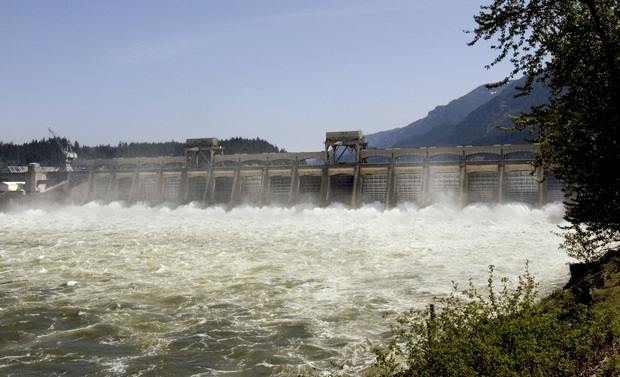forum
library
tutorial
contact

Enjoying Conservation
and Low-cost Power
by Staff
Bellingham Herald, November 4, 2014
|
the film forum library tutorial contact |

|
Enjoying Conservation
by Staff
|
 Thurston County residents enjoy some of the lowest energy rates in the nation, thanks to the Bonneville Power Administration, created by Congress in 1937 to market electric power from the Bonneville Dam on the Columbia River. BPA sells to public and private power companies at cost, rather than at market prices
Thurston County residents enjoy some of the lowest energy rates in the nation, thanks to the Bonneville Power Administration, created by Congress in 1937 to market electric power from the Bonneville Dam on the Columbia River. BPA sells to public and private power companies at cost, rather than at market prices
But not every penny of our electric bill is spent on hydropower. By federal law, a portion of the revenues are spent protect and enhance fish and wildlife and their habitat in the Columbia River and its tributaries.
That complex task falls to the Northwest Power and Conservation Council, which is responsible for developing a 20-year plan that provides adequate power with the least environmental cost for the four-state Columbia Basin -- Montana, Idaho, Oregon and Washington.
The council has directed the investment of more than $3 billion since 1982 -- as much as $250 million a year -- to mitigate the impacts of hydropower dams. For that much money, ratepayers should expect results.
And we're getting them. Sockeye salmon returns over the Bonneville Dam have hit a record high since monitoring began in 1938. Chinook returns set a historical record last year, and are trending to fall off only slightly this year. The Coho run is on pace to break the record set in 2001.
Some of this success is the result of favorable ocean conditions. But when returns of all three species of salmon over the dam have been on a steady upward trend since the late 1990s, it's pretty clear proof that the council's 30-year investment in environmental protection is paying off.
But that doesn't mean we can declare victory. In its recently released five-year update to its fish and wildlife program, the Council focuses on threats to Columbia basin fish and wildlife that it once considered "emerging."
One of the most important threats is climate change. Phil Rockefeller of Olympia, one of Washington state's two governor-appointed members on the Council, says "It's emerged. It's here," and can no longer be ignored.
The council is using adaptive management strategies to let science, not politics, guide the examination of climate change effects on river flows, water temperatures and habitat and to devise mitigation strategies.
Recent data indicates the alpine snow packs that feed the Columbia are diminishing, causing the peak runoff into the river earlier than normal, leaving less flow in the hotter summer months. That raises water temperatures and makes protecting fish harder. The threat of invasive species -- especially quagga mussels, which have devastated the Great Lakes and may be headed in our direction -- could also undo a lot of progress.
As for its other responsibility to plan for the region's future energy needs, the Council sees no need for a new power plant in the next two decades, assuming we continue to make gains in efficient use of the power we already produce. In fact, the Council pioneered the idea of energy efficiency as a resource.
South Sound ratepayers should feel confident the Council is working in our best interest based on its recent salmon success stories, its pioneering work on efficiency and our continuing low power costs.
learn more on topics covered in the film
see the video
read the script
learn the songs
discussion forum
